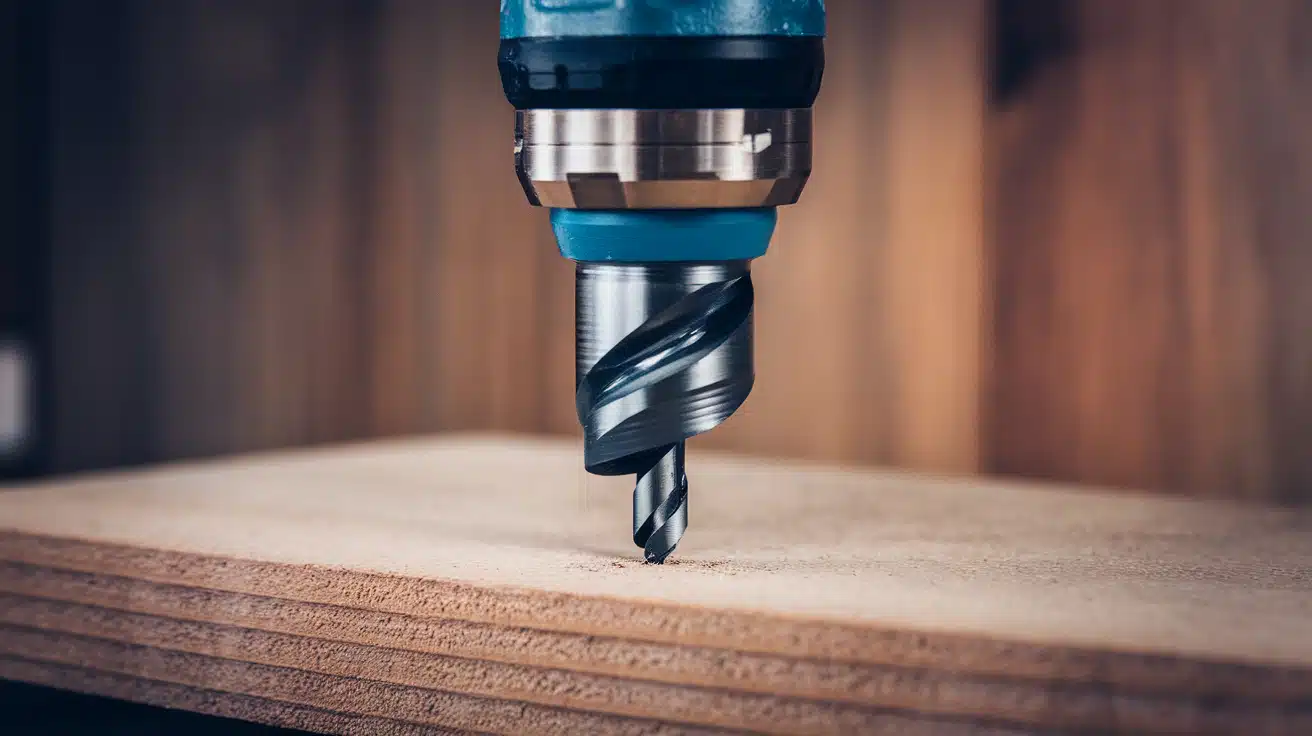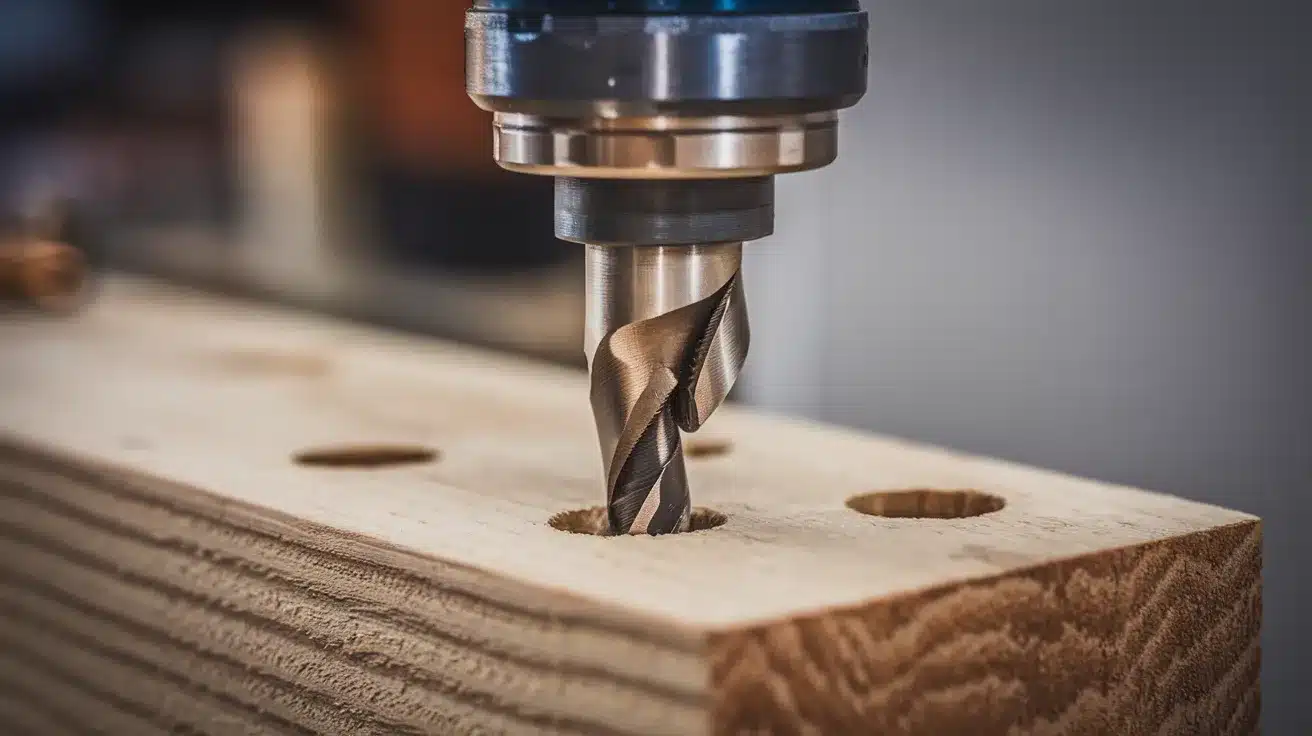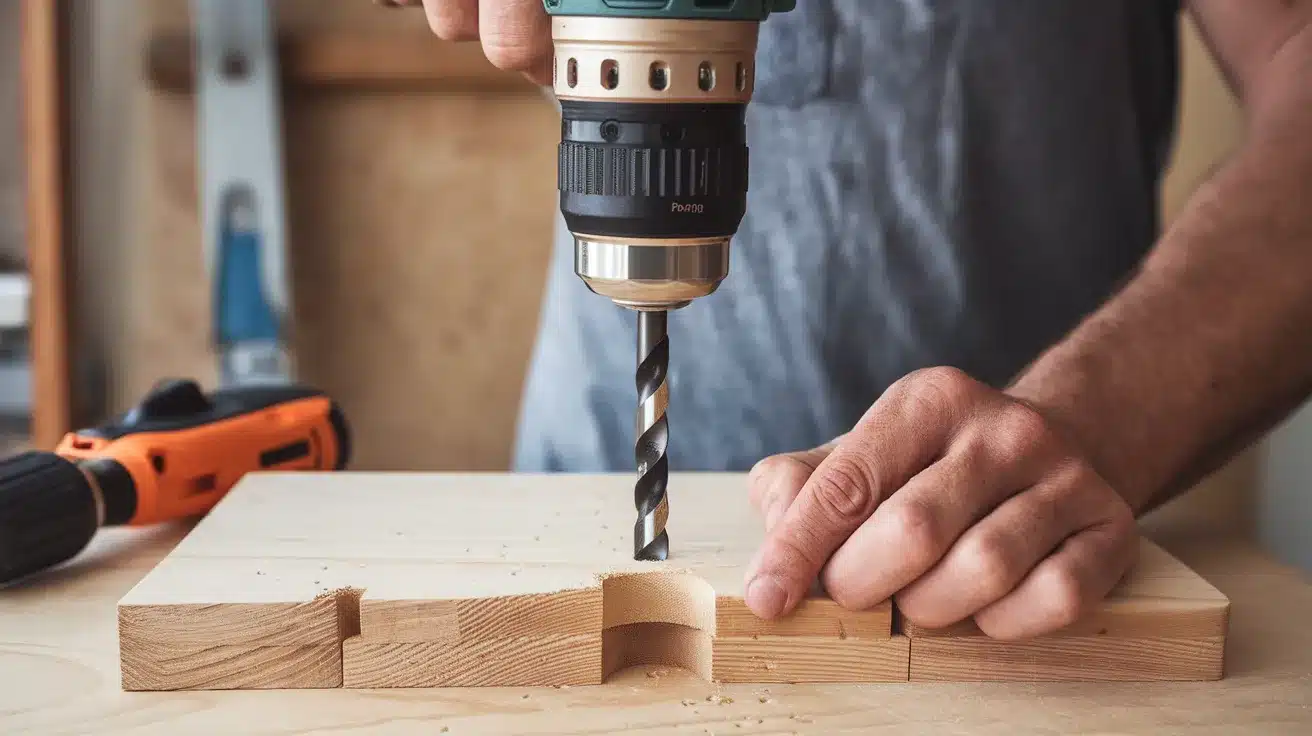Need to drill multiple hole sizes, but are tired of switching between different drill bits? Frustrated with burr-filled, rough holes that require extra cleanup work? Most people struggle with creating clean, precise holes in thin materials like sheet metal and plastic.
Step drill bits solve this problem by combining multiple hole sizes into one efficient tool. These cone-shaped bits with graduated steps can drill, enlarge, and deburr holes in a single operation.
In this guide, you’ll learn exactly what step drill bits are, why professionals in electrical, HVAC, and automotive trades rely on them daily, and how to use them properly on different materials.
We’ll cover the main applications, proper techniques, and pro tips to help you achieve perfect holes every time.
What Is a Step Drill Bit?
A step drill bit is a cone-shaped drilling tool with multiple cutting edges arranged in graduated steps, each step representing a different hole size.
Unlike regular twist drill bits that create only one hole diameter, step drill bits can drill holes ranging from small pilot holes to larger openings in a single operation.
The bit features a sharp, pointed tip for initial penetration, spiral flutes that remove material as you drill, and stepped sections that gradually increase in diameter.
Why Use a Step Drill Bit?
- Multiple hole sizes with one bit: A one-step drill bit replaces an entire set of regular bits, allowing you to drill holes from 1/4 inch to over 1 inch without changing tools.
- Smooth, burr-free holes: The stepped design cuts cleanly through material, leaving smooth edges that need no filing or deburring work.
- Ideal for thin materials: Step bits work perfectly on sheet metal, plastic panels, and thin wood where regular bits might grab or tear the material.
- Time-saving and cost-efficient: No more stopping to change bits or buy multiple sizes – one tool handles most common hole-drilling jobs quickly.
- Great for repetitive, clean drilling: Perfect for professional work like electrical boxes, HVAC installations, or any job requiring consistent, precise holes.
What Are Step Drill Bits Used For?
Step drill bits are specialized tools designed for drilling and enlarging holes in thin materials, such as sheet metal, plastic, and laminates. They offer multiple hole sizes in one bit, providing speed, precision, and versatility.
1. Drilling and Enlarging Holes
Step drill bits excel at creating new holes from scratch or making existing holes bigger without switching tools or using reamers.
You can start with a small pilot hole and gradually increase the size by drilling deeper into the stepped sections. This makes them perfect for situations where you need to test-fit components or adjust hole sizes on the fly.
2. Deburring in a Single Step
The stepped cutting action automatically removes rough edges and burrs as you drill, eliminating extra finishing work.
Traditional drill bits often leave sharp, jagged edges that require filing or sanding. Step bits cut so cleanly that most holes are ready to use immediately, saving time and creating safer work surfaces.
3. Making Clean Holes in Sheet Metal
Perfect for electrical panels, junction boxes, HVAC ducts, automotive bodywork, and metal fabrication projects requiring precise openings. Electricians use them for knockout holes in electrical enclosures.
Auto mechanics rely on them for mounting brackets and access holes. The stepped design prevents the bit from grabbing and distorting thin metal like regular bits often do.
4. Making Clean Holes in Plastic/pvc
Creates smooth holes in plastic panels, PVC pipe, electrical conduit, and synthetic materials without cracking or melting.
The gradual cutting action reduces heat buildup that can cause plastic to melt or warp. This makes them ideal for plumbing work, electrical installations, and plastic fabrication projects.
5. Making Clean Holes in Plexiglass
Cuts through acrylic sheets, plexiglass panels, and polycarbonate materials cleanly without chipping or spider-cracking.
Regular drill bits can cause stress fractures that ruin expensive acrylic sheets. Step bits create perfectly round holes that are ideal for mounting hardware or creating display cases.
6. Making Clean Holes in Thin Wood or Laminate
Works well on plywood, particleboard, laminated surfaces, and thin hardwood where regular bits might splinter or tear.
The stepped cutting action reduces tear-out on the exit side. While not their primary purpose, step bits can handle light woodworking tasks when you need clean, precise holes.
Who Uses Step Drill Bits?
- Electricians – knockout holes in panels: Electrical contractors use step drill bits to create precise knockout holes in junction boxes, electrical panels, and conduit fittings without damaging expensive enclosures.
- HVAC Technicians – Duct Installations: Heating and cooling professionals use step drill bits to drill clean holes in ductwork and sheet metal components for refrigerant lines and mounting hardware.
- Automotive Techs – bodywork and mounting: Auto mechanics use step drill bits for drilling holes in car panels and mounting points while installing accessories without damaging painted surfaces.
- DIYers & Hobbyists – Home Projects, Crafting: Weekend warriors use step drill bits for home improvement projects and hobby work, achieving multiple hole sizes with one versatile tool.
How to Use a Step Drill Bit Properly
Using a step drill bit correctly involves selecting the right speed, applying steady pressure, securing your material, and using lubrication when drilling metal to ensure clean, accurate holes and extend tool life.
Required Tools and Equipment
| Tool/Equipment | Purpose | Notes |
|---|---|---|
| Variable Speed Drill | Controls RPM for different materials | Cordless or corded, both work |
| Clamps or Vise | Secures the workpiece safely | Prevents spinning and injury |
| Safety Glasses | Protects eyes from metal chips | Always required |
| Work Gloves | Protects hands from sharp edges | Cut-resistant preferred |
| Cutting Oil/Lubricant | Reduces heat on metal drilling | WD-40 or cutting fluid |
| Center Punch | Marks starting point | Prevents wandering |
Step-by-Step Process
Step 1: Set up and Safety Mark your hole location with a center punch to prevent the bit from wandering. Secure your workpiece firmly with clamps or in a vise. Put on safety glasses and gloves. Choose the correct drill speed for your material.
Step 2: Start Drilling: Begin drilling at the marked point with light pressure. Let the bit do the work – excessive force can cause breakage or poor hole quality. Stop when you reach your desired hole size on the stepped bit.
Proper drilling speed by material:
- Metal: 300-500 RPM (slow speed prevents overheating)
- Plastic/PVC: 500-800 RPM (medium speed prevents melting)
- Wood/Laminate: 800-1200 RPM (faster speed for clean cuts)
- Plexiglass: 400-600 RPM (slow to prevent cracking)
Step 4: Use of pilot holes (yes/no): No pilot hole needed – Step drill bits are designed to start their own holes with the pointed tip. The sharp point acts as its own pilot, making center punching sufficient for most applications.
Step 5: Cooling methods (especially for metal): Apply cutting oil or WD-40 while drilling metal to reduce heat buildup. For thick metal, drill in short bursts and let the bit cool between drilling sessions. Keep a spray bottle of cutting fluid handy for continuous lubrication.
Mistakes That Can Ruin Your Step Drill Bit
| Mistake | Why It’s a Problem | How to Avoid It |
|---|---|---|
| Spinning Too Fast | Causes overheating, dulls the bit, and may melt plastic or warp metal | Use lower RPMs, especially for metal and plastic |
| Skipping Lubrication on Metal | Increases friction, leads to premature wear, and possible bit damage | Always apply cutting oil or lubricant when drilling metal |
| Using on Thick Materials | Step bits are designed for drilling thin materials; drilling thick stock can cause uneven drilling. | Only use on sheet metal, plastic, or laminate up to ~3-4mm thick |
| Not Securing Workpiece | Can lead to slippage, uneven holes, or injuries | Use a clamp or vise to hold your work securely |
| Applying Too Much Pressure | Forces the bit through the material, risking breakage or poor-quality holes | Let the drill and bit do the work; use steady, moderate pressure |
Conclusion
Step drill bits are truly valuable tools that can save you time, money, and frustration on any project involving holes in thin materials. These versatile bits replace entire sets of standard drill bits, delivering cleaner, more professional results.
From electricians creating knockout holes to DIYers working on home projects, step drill bits make drilling tasks faster and more precise.
The key benefits are clear: multiple hole sizes in one tool, burr-free holes that need no finishing work, and excellent performance on metal, plastic, and other thin materials.
When you follow proper techniques like using the right speed for each material and keeping your workpiece secure, step drill bits consistently deliver professional-quality results.
So, should you add a step drill bit to your toolbox? If you regularly work with sheet metal, electrical panels, plastic, or any thin materials, the answer is absolutely yes.
What’s your next drilling project? Try a step drill bit and experience the difference for yourself.
Frequently Asked Questions
When Should I Use a Step Drill Bit?
Use them on thin materials like sheet metal, plastic, and electrical panels for clean, burr-free holes.
What Is the Advantage of a Step Drill Bit?
One bit creates multiple hole sizes with smooth, professional results that need no finishing work.
What Are the Disadvantages of Step Drill Bits?
They don’t work on thick materials, cost more than regular bits, and aren’t good for deep holes.
Can you use a Step Drill Bit with a Hand Drill?
Yes, they work with both cordless and corded drills using proper speed settings.




